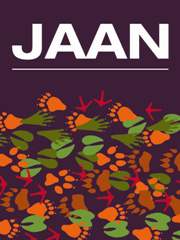Article contents
A natural carbohydrate fraction Actigen™ from Saccharomyces cerevisiae cell wall: effects on goblet cells, gut morphology and performance of broiler chickens
Published online by Cambridge University Press: 16 August 2013
Summary
A study was conducted to evaluate a natural carbohydrate fraction Actigen™ (NCF), derived from mannanoligosaccharide, in feed on growth performance, intestinal morphology and goblet cell number and area of male broilers'. Dietary treatments included: 1) control diet (antibiotic and NCF free), 2) NCF at 200 g/t, 3) NCF at 400 g/t, and 4) NCF 800 g/t. Two hundred and forty birds were placed into 12 replicate pens per treatment (5 birds/pen), sixty birds per treatment. Body weight and feed intake were recorded weekly up to day 42. At this time a 2.5cm section of jejunum and duodenum were excised post mortem for morphological analysis. Birds fed 200 g/t and 800 g/t NCF were significantly (P < 0.01) heavier from day 14 onwards than the control birds. Feed intake was significantly higher in birds fed 200 g/t NCF compared to those fed the control at 21 and 35 days (P < 0.05). Diets containing 200 g/t and 800 g/t of NCF significantly decreased broiler feed conversion ratio (FCR) compared to the control in the first phase (1–14 days) (P < 0.01) and levels of NCF decreased FCR (P < 0.05) in the second phase (15–28 days). NCF had no significant effect on villus height, villus width, crypt depth or villus to crypt ratio in either duodenum or jejunum. NCF did not significantly affect goblet cell area or goblet cell number in the duodenum, however, in the jejunum, 800 g/t NCF significantly (P < 0.05) increased goblet cell area over the control. In conclusion, NCF showed a positive effect on broiler performance in the starter and grower phases, and increased goblet cell area in the jejunum, suggesting higher levels of mucin production. This indicated that the performance benefit of NCF could be age-dependent, with younger birds responding more than the older ones. There were no additional benefits to performance when feeding NCF for a longer period (after 28 d of age), however it is postulated that birds fed NCF would have greater defence to pathogenic challenge through increased storage capacity of mucin.
- Type
- Original Research
- Information
- Copyright
- Copyright © Cambridge University Press and Journal of Applied Animal Nutrition Ltd. 2013
References
- 12
- Cited by


